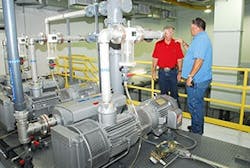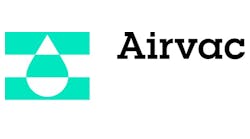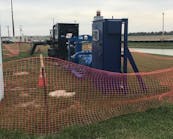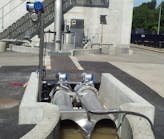Airvac
undefinedHooper, Utah, opts for vacuum sewer system to solve urgent sewage problemsFor more than 150 years, Hooper, Utah, was a small, unremarkable rural community near the eastern shore of the Great Salt Lake. It was much like many western settlements: friendly neighbors, plenty of space and limited local infrastructure.
Hooper began to change in the 1990s as the nearby cities of Ogden and Salt Lake City expanded into the area. What was once a loose collection of farmhouses separated by acreage became a small town. Between 1990 and 2000, Hooper’s population grew by 17%, from about 3,400 to more than 4,000. It incorporated as a city in 2000. Today there are more than 5,500 people living in Hooper, and the town continues to grow.
Although Hooper is typical in many ways to other small towns, it is unique in both geography and geology. The community sits on what is essentially a peninsula in the Great Salt Lake, surrounded on three sides by wetlands. The terrain is extremely flat and the water table is high. Its situation is much like that of low-lying coastal communities: flat ground with water just below the surface.
Priority Problem
When it incorporated, Hooper immediately became the largest unsewered city in Utah. At the time, almost all Hooper residents were relying on septic tanks and drain fields for sewage treatment. A study conducted by the Weber-Morgan (Counties) Board of Health in 2001 raised significant concerns about the amount of sewage and graywater that was entering the groundwater supply.
“The Board of Health study led to further investigation of the situation by Hooper’s public works officials, and what they found was troubling,” said Tracy Allen, P.E., of J.U.B. Engineers, Inc., the consulting engineers for the city of Hooper. “There were dozens of documented cases where raw sewage or graywater entered the local water ways either directly or as a result of a septic tank overflow. This put Hooper at the top of the state’s priority list for funding.”
Hooper clearly needed a municipal sewer system, but designing and installing it would be far from routine. The city’s sewer project began with the formation of the Citizen’s Advisory Committee in 2002. By the end of that year, the decision was made to authorize a sewer feasibility study. That study revealed a situation that would be obvious to any experienced engineer: installing sewers in Hooper would be an expensive proposition.
“Geologically, Hooper has groundwater at about 5 ft below the surface,” noted Dennis Steele, the construction manager for J-U-B Engineers. “In cost projections for a gravity sewer, we had to allow for dewatering and installing foundation materials for the collection lines. We estimated that we would need trenches about 20 to 25 ft deep in many locations to establish gravity flow. The excavation would have taken out roads and existing utilities.”
Designing a new sewer was further complicated by the fact that some of the local real estate developers had created their own small sewer collection systems within the incorporated city limits. All were gravity systems with small pumping stations. Connecting the patchwork of sewers and integrating them into a master plan made the issue even more complicated.
There was a sense of urgency around the project because of Hooper’s rapidly growing population and the need to eliminate sewage contamination of the groundwater supply. Also, the U.S. Environmental Protection Agency’s Phase II Storm Water Management Program required towns like Hooper to reduce pollutants that were entering the storm water outfall and, ultimately, the Great Salt Lake.
Gravity vs. Vacuum
Given the geographic situation, it quickly became obvious that gravity sewers would be very expensive and disruptive to install.
“The projected cost of a gravity system led us to consider other alternatives,” Allen said. “One of the systems we considered was vacuum technology. At the time it was something we were unfamiliar with. The more we studied it, the more we realized that we could save a tremendous amount of money by installing vacuum sewers.”
Allen and his team chose to work with AIRVAC, Inc. , of Rochester, Ind., as their vacuum technology provider. Vacuum sewers have the enormous benefit of being relatively easy to install. Because the vacuum collection mains do not require a continual downgrade slope like gravity mains, they can be buried in shallower trenches, usually 4 to 6 ft in depth. The vacuum collection mains are also smaller in diameter. This means faster installation, less heavy equipment and no dewatering or trench boxes.
Vacuum sewers are remarkably simple in design, have few moving parts and require little maintenance. Household wastewater enters the vacuum system through a gravity service line. It empties into a vacuum valve pit that usually is located near the street. Typically, two to four homes can be connected to a single valve pit. Each valve pit is equipped with a vacuum interface valve that activates when wastewater in the lower sump reaches a predetermined level, usually about 10 gal. Operation of the valve pit is completely pneumatic, so electrical power is not required.
When the valve activates, wastewater is pulled by vacuum pressure into the vacuum collection line, followed by a volume of air. The wastewater forms a slug that is driven by the air due to differential (vacuum) pressure. The slug moves rapidly within the collection main, usually at 15 to 18 ft per second, scouring the pipe and preventing the build up of grease or sludge. And because vacuum technology is a closed system, there are no leaks in a vacuum collection main. That means no groundwater infiltration or sewage exfiltration. Treatment costs are reduced and the local groundwater is protected.
Vacuum pressure within the collection mains is created by vacuum stations. A single vacuum station can provide service to a very large area, often replacing multiple lift stations that would be required for a gravity-flow system.
“The initial plan for gravity sewers would have required something like 15 lift stations and hundreds of manholes. The cost would have been astronomical,” said Steele. “With the vacuum system we have only three vacuum stations and no manholes. The total of installing the vacuum system was 25% less than a gravity system would have cost.”
Steele also noted that they were able to install the new sewer system with very little disruption to existing utilities or traffic.
“Hooper is a farming community with a lot of culverts and irrigation ditches. There are also two major highways through the city. We were able to keep the roads open during installation, sometimes with just one lane, but they remained open. Traffic flow and existing utilities were virtually uninterrupted,” he said.
After Steele completed installation of the AIRVAC system, he accepted a position as the city’s new sewer system manager. One of his primary responsibilities is management of the vacuum sewer network.
Primed for Growth
Hooper’s new AIRVAC system recently went online, and a great deal of attention is focused on how well the technology will work.
“This is the first time vacuum sewer technology has been used in the state of Utah,” said Mayor Glenn Barrow. “We are being watched very closely by the State Department of Water Quality and by other communities."
Hooper can expect more growth in the coming years because the city has a modern sewer system that is cost-effective and reliable. Barrow noted that property values are already increasing.
“I’m proud of what we have accomplished and I think this is a great service to our citizens,” Barrow said. “As the area develops we will continue to see new homes built in Hooper. We want to be smart about our growth, and this new vacuum sewer system certainly looks like a smart idea.”



